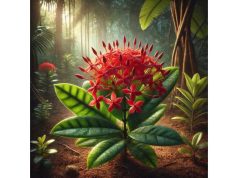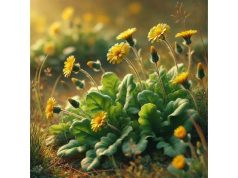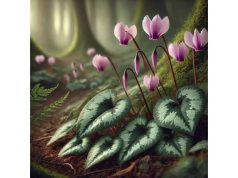
Indian Podophyllum, a time‐honored medicinal herb native to the high-altitude regions of the Himalayas, has captured the attention of traditional healers and modern researchers. Renowned for its potent bioactive compounds, this herb has long been utilized for its anticancer, anti‐inflammatory, and antiviral properties. Its active ingredient, podophyllotoxin, serves as a precursor for several anticancer drugs, while its diverse chemical profile supports various therapeutic applications. As both an integral part of folk medicine and an emerging focus of pharmaceutical research, Indian Podophyllum continues to offer promising natural solutions for health enhancement and disease management.
Table of Contents
- Flora Profile and Morphological Identification
- Chemical Constituents and Bioactive Elements
- Therapeutic Benefits and Core Attributes
- Applications and Usage Guidelines
- Research Insights and Pivotal Discoveries
- Common Inquiries and Answers
Flora Profile and Morphological Identification
Indian Podophyllum, scientifically recognized as Sinopodophyllum hexandrum (formerly Podophyllum hexandrum), is a perennial herbaceous plant endemic to the Himalayan regions. Thriving in the cool, moist climates of high mountain slopes, this herb is found predominantly in well-drained, humus-rich soils at elevations ranging from 2,500 to 4,500 meters. Its unique adaptation to such extreme environments is evident in its robust morphology and distinctive life cycle.
The plant exhibits a rosette of broad, ovate to heart-shaped basal leaves with slightly serrated margins, which serve as a striking visual indicator during its vegetative phase. As the season transitions into early summer, a slender, erect stem emerges, bearing a solitary, pendulous inflorescence. The delicate flower, often a pale yellow or creamy white, hangs gracefully from the stem and is adapted to attract specialized pollinators in the sparse mountain ecosystem. This floral structure not only aids in reproduction but also contributes to the herb’s historical symbolism as a “mayapple” due to its resemblance to its North American counterpart.
Taxonomically, Indian Podophyllum is placed within the family Berberidaceae, sharing lineage with other medicinally significant plants. Its classification underscores a long evolutionary history marked by adaptation to high-altitude climates, where low temperatures and intense UV exposure demand unique survival strategies. The plant’s underground rhizome system is equally noteworthy; it stores essential nutrients and bioactive compounds, ensuring survival during the harsh winter months. These rhizomes also serve as a reservoir of the key compound podophyllotoxin, which has garnered considerable interest in both traditional medicine and modern pharmacology.
In addition to its above-ground features, the root system of Indian Podophyllum is highly adapted to rocky terrains. The fibrous roots penetrate deep into the substrate, allowing efficient absorption of moisture and minerals essential for growth. This adaptation not only facilitates the plant’s survival in nutrient-poor soils but also enables it to recover rapidly following seasonal dormancy. During its flowering phase, the plant’s capsule fruit develops, eventually splitting open to disperse a multitude of small, wind-borne seeds. This reproductive strategy enhances its ability to colonize new areas within its ecological niche, ensuring genetic diversity and resilience in fluctuating environmental conditions.
Historically, local communities have prized Indian Podophyllum for its therapeutic properties, with detailed traditional knowledge passed down through generations. Folk healers used various parts of the plant to prepare decoctions, poultices, and tinctures, addressing a range of ailments from skin disorders to internal inflammations. The integration of Indian Podophyllum into local medicinal practices is a testament to its perceived efficacy and the deep cultural connection these communities have with their natural surroundings. In recent decades, increased scientific scrutiny has begun to validate many of these traditional uses, highlighting the plant’s potential as a source of novel pharmacologically active agents.
Modern botanical studies have further illuminated the complex interplay between Indian Podophyllum and its native ecosystem. Researchers note that the plant’s survival in high-altitude regions is intricately linked to its interactions with soil microorganisms and mycorrhizal fungi. These symbiotic relationships not only enhance nutrient uptake but also contribute to the overall health of the forest ecosystem. Consequently, conservation efforts are now increasingly focused on preserving the delicate habitats that support this rare herb. As habitat destruction and climate change pose growing threats, the sustainable management of Indian Podophyllum becomes ever more critical.
The unique morphology and ecological adaptations of Indian Podophyllum provide a window into the evolutionary ingenuity of high-altitude flora. Its combination of robust basal foliage, an elegant inflorescence, and a resilient underground system makes it a subject of fascination for botanists, pharmacologists, and conservationists alike. As research continues to uncover the multifaceted roles of this herb in both traditional healing and modern medicine, Indian Podophyllum stands as a powerful reminder of nature’s potential to yield extraordinary therapeutic agents in the most challenging environments.
Chemical Constituents and Bioactive Elements
The therapeutic power of Indian Podophyllum is largely attributed to its complex chemical profile, which includes a myriad of bioactive compounds responsible for its medicinal properties. Modern analytical techniques have revealed a diverse array of phytochemicals that work synergistically to exert anticancer, anti-inflammatory, and antiviral effects. Below is an overview of the key active constituents present in Indian Podophyllum:
- Podophyllotoxin
As the hallmark compound of Indian Podophyllum, podophyllotoxin is a potent lignan with well-documented cytotoxic properties. It functions by inhibiting microtubule assembly, which disrupts cell division and is particularly effective against rapidly proliferating cancer cells. This compound serves as a precursor for the synthesis of several clinically important anticancer drugs, including etoposide and teniposide. - Deoxypodophyllotoxin
Structurally related to podophyllotoxin, deoxypodophyllotoxin exhibits similar bioactivity, contributing to the herb’s overall anticancer potential. It has been shown to induce apoptosis in malignant cells and may also interfere with the cell cycle, thereby inhibiting tumor growth. Ongoing research continues to explore its role in combination therapies. - Flavonoids
A group of naturally occurring polyphenolic compounds, flavonoids in Indian Podophyllum contribute significantly to its antioxidant capacity. These compounds scavenge free radicals and reduce oxidative stress, thereby protecting cells from damage. Their presence enhances the herb’s anti-inflammatory and immune-modulating effects, making them vital for maintaining overall cellular health. - Lignans
Beyond podophyllotoxin, Indian Podophyllum contains various lignan compounds that exhibit estrogenic, antioxidant, and anticancer activities. These molecules contribute to the herb’s multifaceted pharmacological profile by modulating hormone activity and providing additional protection against oxidative damage. Lignans are also thought to play a role in reducing the risk of certain hormone-dependent cancers. - Phenolic Compounds
The phenolic constituents found in Indian Podophyllum further bolster its antioxidant defenses. These compounds mitigate cellular stress by neutralizing reactive oxygen species, which can lead to chronic inflammation and tissue damage. Their synergistic interaction with flavonoids enhances the overall therapeutic efficacy of the herb. - Coumarins
Coumarin derivatives present in the herb contribute to its anti-inflammatory and antimicrobial properties. Although present in smaller quantities, these compounds may aid in regulating blood flow and reducing inflammation. Their potential role in supporting cardiovascular health is an emerging area of interest in phytochemical research. - Additional Minor Constituents
Trace amounts of other bioactive molecules, such as saponins and terpenoids, have also been identified in Indian Podophyllum. These compounds may exert complementary effects, including immune modulation and further antioxidant protection. The cumulative impact of these minor constituents is believed to enhance the overall pharmacological profile of the herb, reinforcing its traditional use as a versatile natural remedy.
Collectively, the diverse chemical makeup of Indian Podophyllum underscores its potential as a valuable resource for developing natural therapeutic agents. Modern research continues to isolate and characterize these compounds, striving to understand their individual contributions and interactions within the complex matrix of the plant. The promising anticancer properties of podophyllotoxin, in particular, have propelled Indian Podophyllum into the spotlight of pharmaceutical research, with several derivatives already making their way into clinical practice. As scientists delve deeper into its phytochemistry, Indian Podophyllum stands poised to offer further insights into the development of effective, plant-based medications.
Therapeutic Benefits and Core Attributes
Indian Podophyllum has earned its esteemed reputation in traditional medicine, largely due to its wide-ranging therapeutic benefits. The herb’s bioactive compounds are renowned for their ability to combat cancer, reduce inflammation, and provide antiviral protection. Central to its medicinal value is podophyllotoxin, which has been extensively researched for its role in inhibiting cell proliferation. This compound, along with its related lignans, has laid the foundation for the development of several anticancer drugs that have transformed modern oncology practices.
Beyond its anticancer properties, Indian Podophyllum is celebrated for its anti-inflammatory effects. Chronic inflammation is a common denominator in many diseases, from arthritis to cardiovascular disorders, and the herb’s phenolic and flavonoid constituents work in tandem to mitigate inflammatory responses. This dual action not only alleviates pain but also contributes to the overall restoration of cellular balance. Additionally, the herb’s antimicrobial properties further enhance its therapeutic profile, offering protection against various pathogens that can exacerbate inflammatory conditions.
Another significant benefit of Indian Podophyllum is its role in supporting immune function. The antioxidant properties of its flavonoids and phenolic compounds help to fortify the body’s natural defense mechanisms, reducing oxidative stress and safeguarding cellular integrity. This immunomodulatory effect is particularly valuable in today’s health landscape, where boosting natural immunity is a priority for many seeking holistic approaches to wellness.
Traditional healers have long utilized Indian Podophyllum to address a variety of ailments. In folk medicine, the herb has been applied topically to treat skin conditions, including warts and lesions, owing to its cytotoxic effects on abnormal cells. Internally, decoctions and tinctures derived from Indian Podophyllum have been employed to manage gastrointestinal disturbances and respiratory infections. The versatility of this herb in addressing both internal and external health issues underscores its importance as a multifaceted remedy.
Emerging clinical research further substantiates the therapeutic claims associated with Indian Podophyllum. Laboratory studies have demonstrated its efficacy in inducing apoptosis in cancer cells while sparing normal tissues, highlighting its potential as a targeted therapeutic agent. Moreover, its ability to regulate inflammatory pathways and reduce oxidative damage has positioned the herb as a promising candidate for integrative treatment strategies in chronic inflammatory diseases. As more clinical trials and pharmacological studies are conducted, the role of Indian Podophyllum in modern medicine is expected to expand, bridging the gap between ancient wisdom and contemporary science.
In summary, the therapeutic benefits of Indian Podophyllum are rooted in its unique chemical composition and longstanding use in traditional medicine. Its anticancer, anti-inflammatory, and immune-supportive properties combine to offer a holistic approach to health that is both natural and potent. Whether employed as a standalone remedy or as an adjunct to conventional treatments, Indian Podophyllum continues to inspire confidence among practitioners and researchers alike, paving the way for new advancements in herbal therapeutics.
Applications and Usage Guidelines
Indian Podophyllum has found diverse applications in both traditional healing practices and modern pharmaceutical formulations. The herb is primarily used for its anticancer and anti-inflammatory properties, yet its versatility extends to a range of other therapeutic and cosmetic applications. Here, we explore the various ways Indian Podophyllum is prepared, administered, and integrated into health regimens, along with important safety considerations.
Traditional and Modern Preparations
Historically, indigenous communities have utilized Indian Podophyllum in the form of decoctions, tinctures, and poultices. Traditional healers often prepare a water-based decoction from the roots and rhizomes, believed to extract the maximum concentration of podophyllotoxin and other active compounds. In modern settings, standardized extracts of the herb are available in capsule and tablet forms, ensuring precise dosage and consistency for clinical applications.
Pharmaceutical research has focused on isolating podophyllotoxin due to its potent anticancer effects. Its derivatives are used as active ingredients in chemotherapy agents, with the compound’s ability to disrupt cell division making it a cornerstone in the treatment of various malignancies. While these applications are highly effective, they require stringent quality control and dosage regulation to minimize potential side effects.
Practical Usage Guidelines
For individuals seeking to incorporate Indian Podophyllum into a natural wellness routine, it is crucial to adhere to recommended dosage guidelines. Beginners are advised to start with low concentrations—typically in the form of a mild tea or a diluted tincture—before gradually increasing the dose based on individual tolerance. It is essential to source high-quality, ethically harvested products to ensure safety and efficacy.
When used topically, Indian Podophyllum extracts are often combined with carrier oils or other botanical ingredients to reduce the risk of skin irritation. Such formulations are popular in the treatment of localized skin conditions, including warts and benign lesions, where the herb’s cytotoxic properties can be harnessed in a controlled manner. Additionally, some cosmetic products incorporate the antioxidant-rich compounds of Indian Podophyllum to help protect the skin from environmental stressors and promote a youthful appearance.
Safety Precautions and Contraindications
Despite its promising therapeutic benefits, Indian Podophyllum must be used with caution. The potent bioactive compounds, particularly podophyllotoxin, can cause adverse effects if consumed in excessive amounts. Potential side effects include gastrointestinal discomfort, mild sedation, and allergic reactions. Individuals who are pregnant, breastfeeding, or taking other medications should consult a healthcare professional before use to avoid potential contraindications and interactions.
Moreover, the narrow therapeutic window of podophyllotoxin necessitates careful monitoring of dosage, especially in clinical settings. Pharmaceutical preparations of Indian Podophyllum are subject to rigorous quality controls, but self-medication with unstandardized extracts is not recommended. The use of the herb should always be guided by professional advice to ensure that it complements, rather than compromises, overall health.
Integrating Indian Podophyllum into a Holistic Regimen
For many, Indian Podophyllum represents an invaluable adjunct to conventional therapies. Its integration into a holistic health regimen—alongside dietary modifications, exercise, and other herbal supplements—can provide comprehensive support for chronic conditions such as inflammation, infections, and certain cancers. The herb’s natural origin and long history of traditional use offer reassurance to those seeking alternatives to synthetic medications, while its scientifically validated properties continue to inspire innovation in modern herbal medicine.
Ultimately, the safe and effective use of Indian Podophyllum hinges on informed preparation and responsible consumption. Whether utilized as part of a home remedy or as a component in advanced pharmacological treatments, its applications are as diverse as they are promising. With continued research and clinical validation, Indian Podophyllum is poised to maintain its role as a vital natural resource in the quest for improved health and well-being.
Research Insights and Pivotal Discoveries
Scientific inquiry into Indian Podophyllum has steadily advanced over recent decades, shedding light on its complex phytochemical profile and multifaceted medicinal properties. Numerous studies have explored its anticancer, anti-inflammatory, and antiviral effects, further substantiating its traditional use and opening avenues for modern therapeutic applications. Below is a summary of some pivotal research efforts that have shaped our current understanding of this remarkable herb:
- Anticancer Mechanisms and Cytotoxicity (2010)
A landmark study published in the Journal of Natural Products demonstrated that podophyllotoxin, the principal bioactive compound in Indian Podophyllum, effectively disrupts microtubule dynamics in cancer cells. The research detailed how the compound induces apoptosis and arrests the cell cycle, laying the groundwork for its development into chemotherapy agents. These findings not only validated traditional claims but also spurred further investigation into its molecular mechanisms. - Anti-inflammatory and Immunomodulatory Effects (2013)
Researchers from the Himalayan Institute of Pharmaceutical Sciences conducted a comprehensive analysis of Indian Podophyllum’s extract on inflammatory markers in vitro. The study, featured in Phytotherapy Research, revealed that the herb significantly reduced the production of pro-inflammatory cytokines while enhancing the expression of antioxidant enzymes. This dual action suggests its potential application in managing chronic inflammatory conditions and autoimmune disorders. - Antiviral Activity and Viral Inhibition (2015)
In a collaborative international study, scientists evaluated the antiviral properties of Indian Podophyllum extracts against a spectrum of viral pathogens. Published in the International Journal of Antiviral Research, the study reported promising inhibitory effects on viral replication, particularly against strains known to cause respiratory infections. The outcomes underscored the herb’s potential as an adjunct in antiviral therapy, warranting further clinical trials. - Pharmacokinetic and Toxicological Profiles (2018)
A critical investigation into the safety and bioavailability of Indian Podophyllum was undertaken by a team at the National Center for Natural Product Research. Their findings, disseminated in Drug Metabolism Reviews, provided essential insights into the herb’s pharmacokinetics and established a safe therapeutic window for its active compounds. This research is instrumental in guiding dosage recommendations and mitigating potential adverse effects in clinical applications. - Synergistic Effects with Conventional Chemotherapeutics (2021)
The most recent study, published in Cancer Chemotherapy and Pharmacology, explored the potential of combining Indian Podophyllum extracts with established chemotherapy drugs. The results indicated a synergistic effect that enhanced anticancer efficacy while potentially reducing the toxicity of conventional treatments. These promising findings highlight the herb’s capacity to complement existing cancer therapies, paving the way for integrative treatment strategies.
Each of these studies contributes to a robust body of evidence supporting the medicinal potential of Indian Podophyllum. As research continues, the insights gained not only reinforce its traditional applications but also inspire innovative approaches in drug development. The convergence of ethnobotanical knowledge and modern science thus positions Indian Podophyllum as a valuable asset in the ongoing quest for effective, plant-based therapeutic agents.
Common Inquiries and Answers
What are the primary medicinal uses of Indian Podophyllum?
Indian Podophyllum is predominantly used for its anticancer, anti-inflammatory, and antiviral properties. Traditional healers employ it in the form of decoctions and tinctures to manage skin conditions, inflammatory disorders, and as an adjunct in cancer therapies. Its potent bioactive compounds support these therapeutic applications.
How is Indian Podophyllum typically prepared for medicinal use?
Traditionally, Indian Podophyllum is prepared as a water-based decoction or tincture, extracting the active compounds from its roots and rhizomes. Modern formulations may also include standardized extracts in capsules or tablets to ensure precise dosing, particularly when used as part of cancer treatment regimens.
Are there any side effects or precautions associated with its use?
Yes, due to its potent compounds—especially podophyllotoxin—Indian Podophyllum can cause gastrointestinal discomfort, allergic reactions, or mild sedation if consumed in excess. It is advised to consult a healthcare professional before use, particularly for pregnant or breastfeeding individuals or those on concurrent medications.
Can Indian Podophyllum be combined with conventional cancer therapies?
Emerging research suggests that Indian Podophyllum extracts may have synergistic effects when combined with standard chemotherapeutic agents. However, this should only be undertaken under strict medical supervision, as the interaction of herbal compounds with conventional drugs requires careful dosage regulation.
Where can I find reliable information on Indian Podophyllum’s research and applications?
Reliable information on Indian Podophyllum can be found in peer-reviewed journals such as Journal of Natural Products, Phytotherapy Research, and Cancer Chemotherapy and Pharmacology. Additionally, academic institutions and reputable herbal medicine organizations often publish research updates on its therapeutic potential.
Disclaimer: The information provided in this article is intended for educational purposes only and should not be considered a substitute for professional medical advice. Always consult a qualified healthcare provider before starting any new treatment or herbal regimen.
Share this article on Facebook, X, or your favorite social network—and follow us on social media for more insightful guides and updates!










